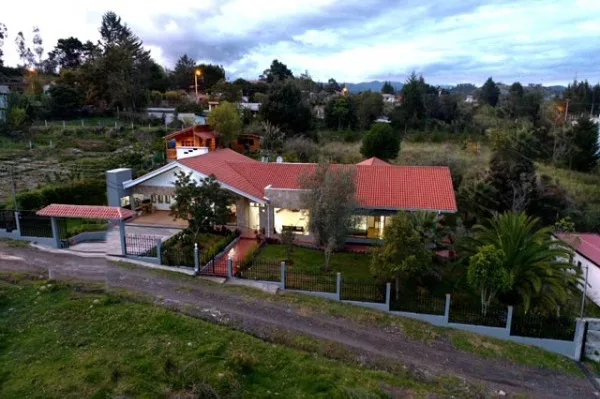Cotopaxi is more dangerous than ever says Ecuador’s top geologist and warns residents living in eruption danger zones to be prepared for the worst
Mario Ruiz, director of Ecuador’s Geophysical Institute, cautions that the day-to-day activity at the Cotopaxi volcano is not an indicator of the strength of the eventual eruption. “We are not ruling out anything, even a catastrophic eruption on the level of the 1877 eruption, or even worse,” says Ruiz.

Mario Ruiz, director of Ecuador’s Geophysical Institute. Photo credit: El Comercio
Current activity at Cotopaxi remains moderate, according to Ruiz, with about 50 earthquakes a day and an increasing volume of sulfur dioxide being expelled. He adds that internal pressure within the volcano continues to build, causing some outward deformation of the mountain.
Although the amount of ash being emitted has dropped from the levels of late August and early September, Ruiz says this is not significant in the overall eruption process. “We are experiencing the second pulse of activity, which shows lower ash emissions but this is just a phase of the process, and there will be more of these phases,” he says. “People need to understand that this volcanic process is not over.”
Ruiz says social media reports that the volcano is returning to a calmer, pre-eruptive stage are incorrect. “We can say emphatically, no, this is not the case, and this kind of discussion can be very dangerous since it promotes a sense of complacency among the public. This is not the time to put aside efforts of preparedness.”
Ruiz, who earned his Ph.D in geology from the University of North Carolina and his masters from the New Mexico Institute of Technology in the U.S., maintains that the “unknowns” about a coming eruption outweigh the “knowns.” “Predicting volcanoes is a very inexact science. Even though we have many measurements, we cannot see inside a volcano. What we can rely on is the historic record of eruptions and we know that there have been very large eruptions at Cotopaxi in the past.”

Cotopaxi in early September.
The Institute has released what it calls the most likely scenarios for an eruption, and says the most likely is one in which magma continues to rise slowly and steadily within the central volcanic vent, causing an eruption that will affect an area within 10 kilometers of the volcano and mostly affect the Cotopaxi National Park. “Statistically, smaller eruptions are always more likely than large ones and that is why we are saying this,” Ruiz says. “But again, given the historic record of this volcano, we must prepare for more serious scenarios as well. Conditions can change suddenly so these scenarios are only educated guesses. The historic record shows that there have been 20 large eruptions over the past 2,000 years, and we are overdue.”
When will Cotopaxi go into full eruptive stage? “It could be within days or weeks with some warning. Or, it could come suddenly with no warning,” Ruiz says.
Once an eruption begins, he says, the country must be prepared for a drawn out process. “History has taught us that Cotopaxi eruptive periods can last for years. It is not like there will be an eruption and it will be over and everything returns to normal. Again, preparation and understanding of the situation is critical.”
In the case of the most powerful eruption, the effects could be felt as far south as Ambato in the central sierra, and as far west at the coast, according to the Geophysical Institute. Cuenca and areas to the south would not be directly affected.


















